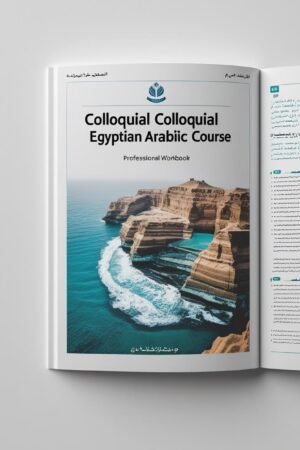Learn Jordanian Arabic Online
Are you looking to learn Jordanian Arabic online and discover a fascinating culture? Jordanian Arabic, part of the Levantine dialects, is widely spoken in Jordan and provides an exciting opportunity to connect with locals. With the right resources and strategies, mastering this dialect can be easier and faster than you think. This guide highlights the best tools, including apps, books, PDFs, and courses, to help you become proficient while following SEO-friendly principles. Let Alphabet Arabic Academy be your go-to destination for effective and affordable learning at just $40 per month. contact us

1. Peace Corps Arabic
The Peace Corps offers excellent Arabic resources that emphasize practical vocabulary and conversational skills. These materials help students focus on real-life communication and cultural understanding. Whether you are a beginner or seeking advanced instruction, Peace Corps Arabic resources can guide you through the nuances of Jordanian Arabic. Our academy builds on this approach by providing intensive and immersive classes, ensuring you develop fluency in speaking, listening, and writing. Choose our expert-led programs for a guaranteed learning experience.
2. Speak Arabic Online
Speaking Arabic online is now easier with platforms offering live lessons, audio content, and interactive exercises. These resources focus on improving pronunciation and conversational fluency. Apps and websites provide flexible schedules to suit learners from different time zones. Alphabet Arabic Academy stands out with experienced native Jordanian tutors who tailor lessons to individual needs. Whether you are focusing on colloquial Jordanian Arabic or classical forms, our courses ensure success. Sign up now and embark on your path to fluency.
3. How to Learn Jordanian Arabic on Reddit
Reddit is a treasure trove of tips, tricks, and user experiences for language learners. Subreddits such as r/learn_arabic offer guidance on apps, Jordanian Arabic PDFs, and beginner-friendly resources. You can discover how other learners overcame challenges and succeeded. At Alphabet Arabic Academy, we bring structure and expertise to your learning journey, offering more than just community advice. With our professional tutors and interactive content, your progress is guaranteed.
4. Jordanian Arabic Translator
Translation tools are useful for decoding basic phrases and building a foundational vocabulary. Websites and apps offering Jordanian Arabic translators provide quick solutions but lack depth. To truly learn Jordanian Arabic online, structured instruction is key. Alphabet Arabic Academy offers courses designed to build conversational confidence and teach you how to communicate naturally without relying on translators. Experience real progress with our comprehensive programs.
5. Jordanian Arabic Phrases
Mastering common Jordanian Arabic phrases is essential for effective communication. Popular expressions like “Ahlan” for “Welcome” or “Shukran” for “Thank you” are easy to learn but invaluable in daily conversations. Our courses at Alphabet Arabic Academy include phrase-focused lessons, interactive practice, and cultural insights. With our help, you’ll quickly build your confidence and speak like a native Jordanian.
6. Jordanian Arabic PDF
PDF resources are ideal for learners who prefer self-paced study. These documents often include vocabulary lists, grammar explanations, and exercises tailored for different proficiency levels. Alphabet Arabic Academy provides downloadable PDFs to complement your lessons, ensuring continuous access to valuable learning materials. Whether you’re a beginner or an advanced student, our resources help you improve effectively.
7. Learn Jordanian Arabic Online PDF
Many online resources offer detailed PDFs for learning Jordanian Arabic, covering everything from dialect differences to advanced grammar. These materials are invaluable for studying colloquial and standard Arabic. At Alphabet Arabic Academy, our exclusive PDFs are crafted by language experts, focusing on Jordanian dialects while integrating cultural elements. Pair these with our live classes for the ultimate learning experience.
8. Learn Jordanian Arabic Online Reddit
Online forums like Reddit are great for discovering tips and recommendations from other learners and native speakers. Subreddits can provide reviews of apps, books, and websites for learning Jordanian Arabic. While forums are helpful, Alphabet Arabic Academy offers the expertise and structured programs that self-directed learning cannot. With qualified tutors, interactive lessons, and a supportive environment, you’ll achieve fluency faster.
Why Choose Alphabet Arabic Academy?
At Alphabet Arabic Academy, we combine flexibility, affordability, and expertise to create the ultimate learning environment. Our experienced native Jordanian tutors provide personalized instruction tailored to your goals. With access to comprehensive resources, including PDFs, audio lessons, and interactive activities, we guarantee steady progress. Our classes are designed for both beginners and advanced learners, focusing on conversational skills, cultural understanding, and listening proficiency. Register today for as little as $40 per month and begin your journey toward mastering Jordanian Arabic. Stay connected with us on social media for news and advice.
Don’t wait to start your learning adventure. With Alphabet Arabic Academy, you’ll gain the skills and confidence to communicate effectively and enjoy the rich culture of Jordan. Join us today and experience the best way to learn Jordanian Arabic online.
Frequently Asked Questions (FAQs)
1. What is the academic approach to learning Jordanian Arabic?
Our academic programs focus on structured learning, covering both colloquial and classical Arabic, ensuring a comprehensive understanding of the language.
2. How do I apply for admission to Alphabet Arabic Academy?
Admission is simple and can be completed online through our website. Fill out the admission form, choose your program, and get started today.
3. Does Alphabet Arabic Academy collaborate with institutes like Albaher Center?
We work with similar centers to offer a high standard of Arabic language education, emphasizing immersive and practical learning.
4. Can I study Jordanian Arabic in Amman?
Yes, Amman is a hub for learning Jordanian Arabic. We also provide online courses, bringing the experience of studying in Amman to your home.
5. Are there apps available for learning Jordanian Arabic?
Yes, apps are a popular way to learn on the go. Our courses complement these apps with live instruction and tailored content.
6. Do you offer books or downloadable materials?
Absolutely! We provide Jordanian Arabic books, PDFs, and other resources that you can download and use for self-paced learning.
7. Is there a center for distance education?
Our online platform serves as a distance education center, offering flexible schedules and access to resources like audio lessons and grammar contents.
8. Is it possible to gain credits when courses are completed?
While we do not offer academic credits, our courses are designed to provide equal value through practical skills and real-world communication expertise.
9. How does the program emphasize language skills?
Our programs put emphasis on listening, speaking, reading, and writing skills, ensuring a balanced language education.
10. Is English-language support available?
Yes, we provide English explanations for beginners, making it easier for foreigners to transition into learning Jordanian Arabic.
11. Are there equal opportunities for locals and foreigners?
We welcome both Jordanians and foreigners, creating an inclusive and supportive learning environment.
12. What facilities do you provide for online learners?
Our online facilities include live lessons, downloadable materials, and interactive tools for engaging and effective learning.
13. Is accommodation accessible for international students?
While we focus on online learning, we can recommend housing options for students planning to study in Jordan.
14. What is Fusha Arabic, and do you teach it?
Fusha, or Modern Standard Arabic (MSA), is included in our programs alongside Jordanian dialects to provide a complete language education.
15. How many hours each week should I commit to learning?
We recommend at least 5-10 hours per week, depending on your goals, to see steady improvement.
16. Do you provide individual tutors?
Yes, our private tutors offer personalized lessons tailored to your specific needs and goals.
17. Can you recommend language programs in Lebanon, Morocco, or Egypt?
While we specialize in Jordanian Arabic, we can guide you on programs available in other regions, focusing on their respective dialects.
18. What makes Jordan a great region for learning Arabic?
Jordan’s rich culture, friendly locals, and central location in the Levantine region Jordan’s vibrant culture, welcoming residents, and strategic position in the Levant make it perfect for diving into the Arabic language.
19. Are there Palestinian and Syrian dialect options available?
Our courses include elements of Levantine Arabic, which encompasses Palestinian and Syrian dialects, alongside Jordanian.
20. How do I get started with Alphabet Arabic Academy?
Visit our website, create a profile, and view our courses. Once you register, you’ll be on your way to learning Jordanian Arabic online.
also read
https://alphabetarabicacademy.com/learn-arabic-online-course/ https://alphabetarabicacademy.com/boost-skills-learn-arabic-online-in-weeks-now/ https://alphabetarabicacademy.com/learn-arabic-online-classes-start-now/





